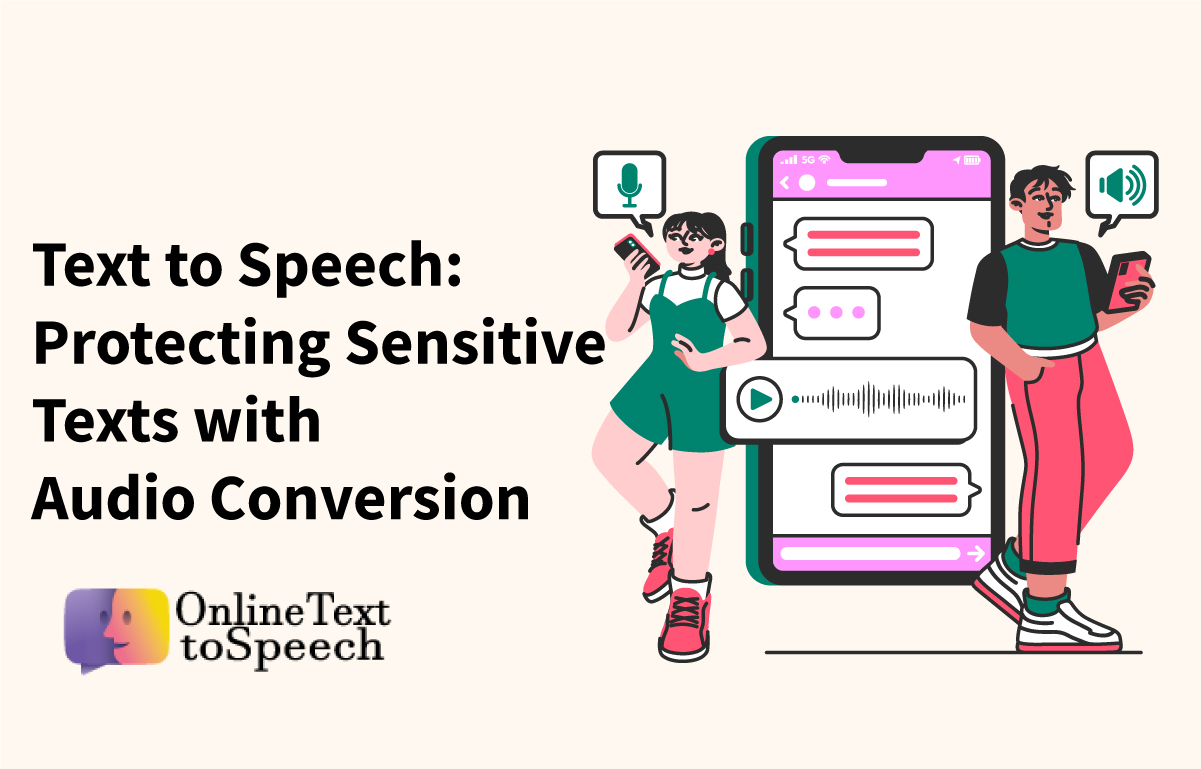
In the age of digital transformation, where borders blur and global experiences grow ever more interconnected, one technology is quietly revolutionizing the way we explore the world: text to speech.
What began as an assistive tool for the visually impaired has now emerged as a powerful utility for travelers seeking immersive, multilingual experiences without the constraints of traditional language barriers. As tourism surges in 2025, travel no longer requires fluency in multiple languages, thanks to the rise of dynamic AI-generated travel companions.
With text to speech free platforms becoming increasingly accessible, travelers can now enjoy personalized audio tours in real time—whether wandering through the historical alleys of Rome, exploring the vibrant streets of Tokyo, or trekking the trails of Patagonia.
The convergence of artificial intelligence and language technology has given birth to a new era of smart travel, one where language adapts to the listener, not the other way around.
AI Text to Speech in Global Travel: A New Frontier for Exploration
The journey from static guidebooks to real-time, interactive audio experiences has been swift. Thanks to AI text to speech technology, modern explorers are equipped with audio guides that not only translate but interpret cultural nuance, tone, and expression. This evolution goes beyond simple translation—it’s an intelligent, real-time narration that mimics natural human speech.
As these systems become more intelligent, they recognize user preferences, accents, and even pacing needs. Whether someone prefers a casual tone or a formal delivery, text to speech voices can now match that choice, making every travel encounter feel intimate and tailor-made.
This shift is making a major impact in cities where tourism infrastructure may be lacking. In remote locations or lesser-known destinations, digital travelers rely heavily on text to speech online guides to receive directions, local tips, and cultural context—turning every smartphone into a multi-language travel assistant.
Breaking Language Barriers With Text to Audio Free Tools
Language differences have historically limited access to authentic cultural experiences. While interpreters and bilingual guides are still valuable, not every traveler can afford or access them. Enter text to audio free tools, which empower tourists to engage more deeply without extra expense.
Imagine arriving in Morocco, scanning a plaque with your camera, and instantly hearing its content in your native language—complete with tone, inflection, and pacing that feels conversational. This is no longer a futuristic fantasy; it’s already in motion. With services offering free online text to speech, travelers can bring entire cities to life through their smartphones or earbuds.
The result is a democratization of cultural knowledge. No longer limited to expensive audio tours or high-end apps, visitors can explore like locals, gaining deeper insight into places through real-time, adaptive narration.
Personal Travel Companions: The Rise of the Text to Voice Generator
Today’s traveler is not just using maps and photos—they’re relying on real-time voices that explain, recommend, and even warn. The text to voice generator has emerged as an invisible guide, accompanying people through crowded marketplaces, tranquil temples, and historic museums.
These tools synthesize natural-sounding voices in dozens of languages, often imitating human speech so closely that most listeners can’t tell the difference. Tourists can type in their questions, descriptions, or historical context, and instantly receive an audio version that blends seamlessly into their surroundings.
For those with visual impairments, these voice-based systems offer more than convenience—they offer independence. Navigating through cities without needing to look at screens or maps, they gain fuller access to experiences many take for granted. The role of text to speech generator apps in promoting accessibility in travel cannot be overstated.
Designing the Perfect Multilingual Travel Day With TTS
A typical day powered by AI text to speech might begin with an early morning walking tour. Instead of joining a crowded group with a fixed itinerary, a traveler launches their personalized audio assistant, which curates a route based on interests—art, history, architecture, or food.
As they explore, the app narrates details with warmth and clarity. The voice might shift to a local dialect, replicating how a resident might speak, or adjust for slower pacing if the user lingers at a landmark. During lunch, the tool reads menu translations aloud using text to speech voices, preventing awkward language gaps.
Later, on public transit, the app quietly offers historical anecdotes about passing neighborhoods, keeping the experience alive even in mundane moments. At a local market, a simple image scan and the text to speech generator whispers product descriptions, etiquette, or bargaining tips. This isn’t passive consumption—it’s guided storytelling, shaped by the listener’s pace and preferences.
Text to Speech Online Tools and the Transformation of Offline Spaces
As surprising as it sounds, text to speech online tools are reshaping offline experiences. Museums, for instance, are incorporating QR codes that allow visitors to receive instant audio descriptions in multiple languages, without needing headphones or guided tours.
Nature parks now offer virtual rangers who speak via apps in local tongues. Historical sites use AI narration to animate ruins and artifacts, offering a sense of what once was, through richly narrated context. Even public transportation systems are integrating free online text to speech for multilingual announcements and updates.
Because travelers often struggle with spotty connections abroad, many of these platforms offer downloadable content powered by cloud-based AI text to speech engines. Users can prepare custom guides for offline use—ideal for rural explorations or places without reliable data access.
Why Free Online Text to Speech Is a Game-Changer for Budget Travelers
Budget travel has always involved compromises—fewer amenities, less guidance, and more reliance on personal research. But free online text to speech tools level the playing field. Now, anyone with a smartphone can enjoy features once reserved for expensive tours or high-end apps.
Backpackers no longer need to buy multilingual phrasebooks or worry about miscommunications. By simply using a reliable text to speech free tool, they can read local news, understand train announcements, or even engage in simple dialogue with locals—all via audio support.
Moreover, the range of text to speech voices now includes regional accents, cultural intonations, and gender preferences. This diversity ensures a natural, respectful communication experience that enhances cultural immersion, rather than hindering it.
The Role of Text to Speech Generator Apps in Sustainable Travel
In 2025, sustainability is a key travel priority. Travelers are reducing their environmental footprint, and that includes cutting down on printed materials like guidebooks, brochures, and maps. Here’s where text to speech generator apps step in.
These digital guides eliminate the need for physical content by offering personalized, real-time updates. Tourists can learn about protected sites, endangered species, or eco-guidelines through engaging narration instead of wasteful flyers. By integrating with GPS, these tools even alert users when they’re entering sensitive areas or explain how to tread lightly in local ecosystems.
Such innovations not only save trees—they also keep travelers informed and accountable in real time.
Accessibility and Inclusion Through AI Text to Speech
Beyond convenience, the greatest contribution of AI text to speech lies in its role in inclusion. People with disabilities, older travelers, and even those experiencing temporary impairments (like losing glasses on a trip) benefit from hands-free, voice-guided travel.
Apps now automatically convert location-based text to immersive audio. Public signs, tourist plaques, and digital menus become accessible to everyone. And since text to speech voices are becoming indistinguishable from real humans, users can engage with the content without stigma or awkwardness.
Multilingual families, too, find great value here. A parent may set one voice for a child and another for themselves, receiving the same information in their preferred languages. This collaborative experience brings families closer and ensures no one is left out.
The Future of Travel Narration: Smart Voice Integration
As the travel-tech space matures, integration becomes key. Soon, voice-powered guides will not only respond to typed input but recognize natural speech. Ask “What’s that building?” and your phone, powered by an advanced text to voice generator, will describe it using layered historical, cultural, and local knowledge.
Hotels will offer custom wake-up calls using AI narration in your language of choice. Airlines will stream safety protocols via text to speech free systems tailored to your region. The entire travel ecosystem—from booking to departure to return—will be punctuated by personalized, intelligent narration.
In this evolving landscape, tools like Online Text to Speech are emerging as essential partners for modern globetrotters who seek knowledge, accessibility, and connection—all without the need for translation dictionaries or expensive audio devices.
FAQs
It enables real-time, multilingual audio support for navigating, learning, and communicating abroad.
Yes, many tools offer offline capabilities by downloading audio files or content in advance.
Yes, many voices today sound human-like and offer regional tones for realistic narration.
Most reputable tools ensure data privacy, especially when using downloaded offline features.
It provides instant translations and context, helping users engage more deeply with local environments.





